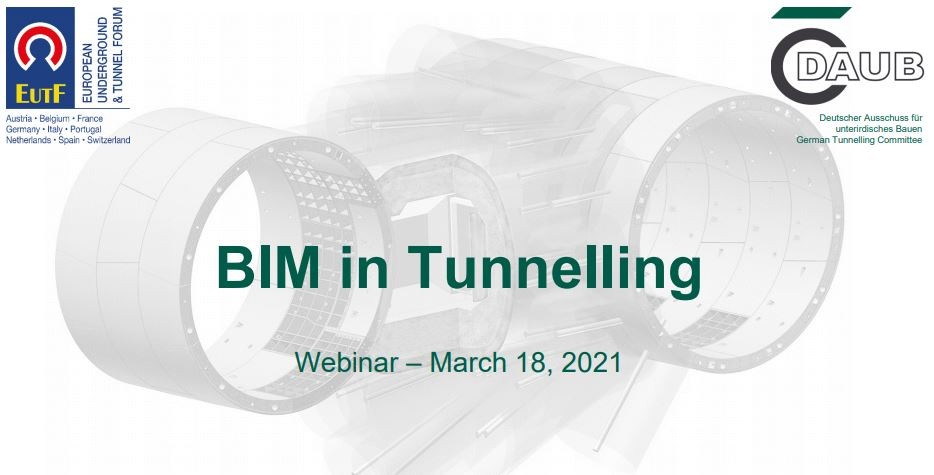1st Set of Documents:
- Digital Design, Building and Operation of Underground Structures
- BIM in Tunnelling, DAUB-Working Group
- Model requirements – Part 1: Object definition, coding and properties
- Webinar: BIM in Tunnelling
Summary:
Digitalisation is currently one of the central issues in the construction industry, which is why we are witnessing the growth in the number of publications on the subject, addressing not only buildings, but also increasingly infrastructure: bridges, hydroelectric power plants, highway and railway, underground works, etc.
Working Group 4 of the Portuguese Commission on Tunnels and Underground Space has decided to disclose some of the most relevant and modern documents.
As such, due to the quality, systematization and originality of the publication, the documentation produced recently by DAUB – The German Tunnelling Committee could not be missedMore specifically, it includes the “Digital Design, Building and Operation of Underground Stuctures – BIM in Tunnelling” and its accompanying documents: “Model requirements – Part 1 Object definition, coding and properties” and Annexes These documents were disseminated in the Webinar “BIM in Tunnelling” of March 18, 2021, which is available at https://youtu.be/pyxEy3Kw-t4, and which deserves equal attention.
The first document in this series “BIM in Tunneling” constitutes a set of rules of good practice in the application of BIM in underground works, in a clear, simple and systematic approach, which allows the less versed reader to gain a global understanding of the subject, without failing to deepen the particular topics of underground works, in a practical and creative way. Part of the originality of the approach is in the way uncertainty in geotechnical works is addressed, with digital models being able to transmit the quality of geological-geotechnical information. For this purpose, a phased uncertainty management methodology is proposed throughout the project, which uses the BIM model as a clarifier of the information quality, based on an innovative definition of Level of Detail. The document summarizes the various definitions of Level of Development (LOD), which exist in the field literature, definitively separating three concepts that are often blended: geometry, information, and model quality – the model’s ability to respond adequately to the requirements for which it was produced. Adding to these concepts, the document also defines and recommends some BIM uses, applicable and desirable in underground works, characterizing them and clarifying their advantages and challenges.
These are just some of the topics covered in the document, which:
- analyzes the application of BIM throughout the entire life cycle of underground works, with relevant considerations about their longevity, giving even more importance to the adoption of open formats for sharing information,
- suggests approaches to the quantification process that include the insurmountable uncertainty associated with geotechnical works,
- proposes innovative solutions in contracting BIM services, and
- addresses even less common themes, such as logistics in the operations of an underground work and the role of BIM in this context.
ollowing this introductory document, DAUB has already released the first specific technical document, the“Model requirements – Part 1 Object definition, coding and properties” which, as the name implies, presents a set of best practices for the management of BIM objects, proposing a codification/dictionary in German and English that allows the identification and parameterization of the objects that make up an underground work. This codification, by assigning designations independent of the author, facilitates the exchange of information during the design, construction and management phases of the project. No less relevant are the annexes that accompany this document, and which reveal themselves as essential tools for the application of the rules described in it.
In the Webinar “BIM in Tunneling”, in addition to detailing the work embodied in the two aforementioned documents, DAUB colleagues revealed that the preparation of three complementary documents is in progress, which should be published by 2022:
- Model Requirements Part 2 – Structured handling of data and Information;
- Model Requirements Part 3 – Recommendation on digital ground modelling;
- Model Requirements Part 4 – Recommendation on element-based tendering.
We look forward for the next DAUB publications and we hope that the information presented here, in a systematic way, can serve as initial guidance for professionals involved in the development of BIM in underground works.
